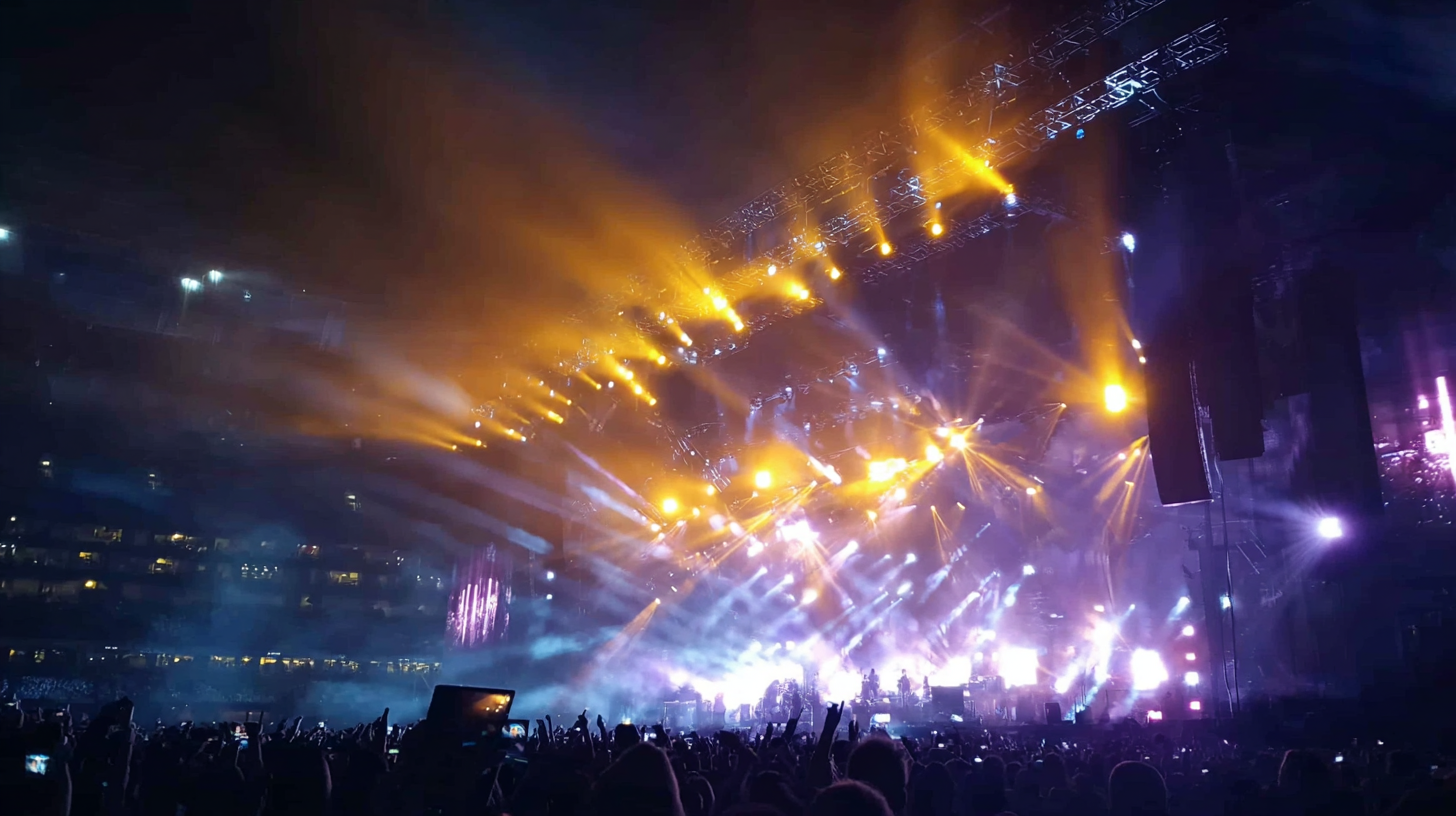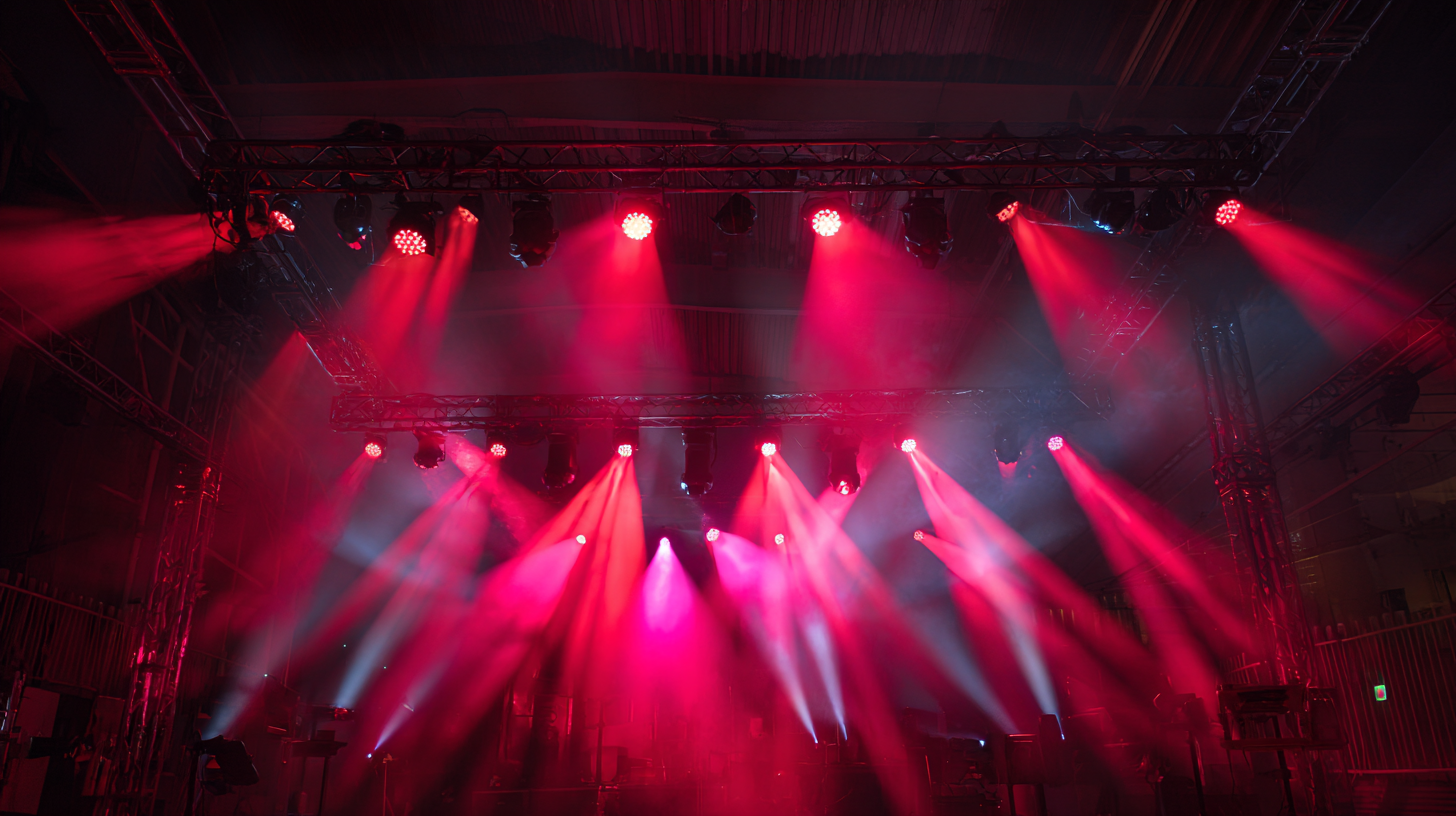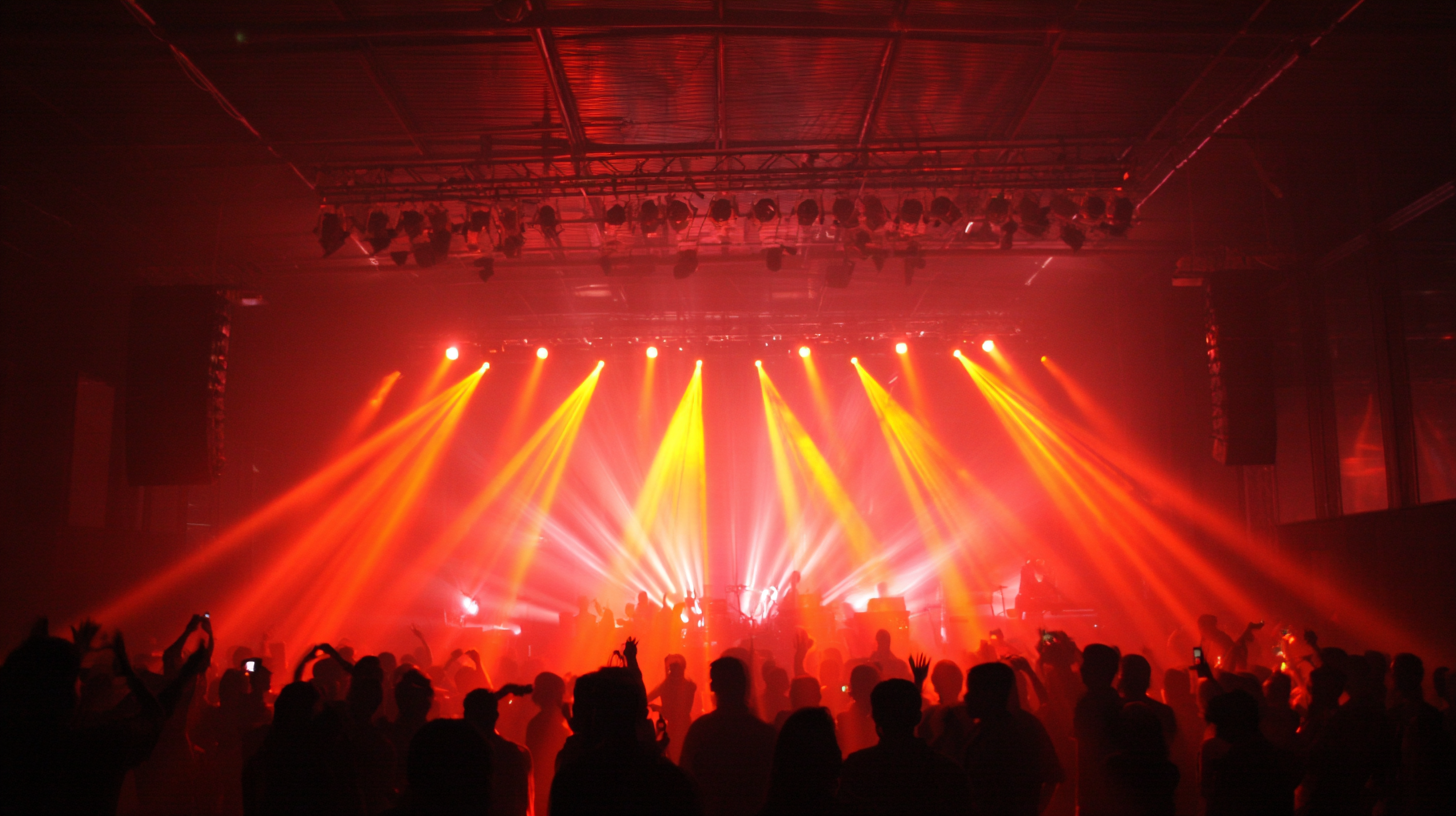Ultimate Guide to Choosing the Best Led Stage Light for Your Event
In recent years, the demand for live events has surged, prompting a significant rise in the use of high-quality lighting solutions like LED stage lights. According to a report by Grand View Research, the global stage lighting market is projected to reach USD 6.48 billion by 2024, with LED technology leading the way due to its energy efficiency and versatility. As event planners increasingly recognize the importance of captivating visual experiences, the selection of the right LED stage light has become crucial for enhancing ambiance and engaging audiences. This ultimate guide aims to provide valuable insights into choosing the best LED stage light for your event, ensuring that every performance is not only illuminated but also unforgettable.

Understanding the LED Stage Lighting Market: Key Trends and Projections for 2025
As the LED stage lighting market evolves, understanding key trends can be vital for anyone planning an event. By 2025, we anticipate significant advancements in technology that will enhance the energy efficiency and versatility of LED lights. For instance, expect to see more fixtures that combine multiple functionalities, such as moving effects, color mixing, and DMX control capabilities in a single unit. This convergence will provide event planners with greater creative options while simplifying equipment logistics.
When selecting the best LED stage lighting for your event, consider the following tips: First, assess the size and layout of your venue to determine the appropriate brightness and coverage needed. It's essential to strike a balance between illumination and ambiance to create the right atmosphere. Additionally, investing in programmable lighting systems can facilitate intricate designs that elevate the performance experience. Finally, keep an eye on market projections, as manufacturers are likely to introduce innovative products and eco-friendly options that could redefine how we approach event lighting in the near future.

Top Features to Consider When Choosing LED Stage Lights for Events
When selecting LED stage lights for your event, several key features should inform your decision. First and foremost, consider the brightness of the lights, measured in lumens. According to a report by the Entertainment Technician Association, LED lights can produce between 1,000 to 20,000 lumens, making them ideal for both small gatherings and large performances. For outdoor events or venues with high ceilings, opt for higher lumen output to ensure visibility.
Another critical factor is color accuracy, represented by the Color Rendering Index (CRI). A higher CRI (90 or above) means the lights will reproduce colors more vividly and accurately, enhancing the overall aesthetic of your event. Recent industry studies show that events utilizing lights with a CRI of at least 90 receive higher satisfaction ratings from audiences.
Tips: Always test the lights in the actual venue prior to the event. This helps in evaluating how the lighting interacts with the space and the audience. Additionally, consider choosing versatile fixtures that allow for various lighting effects, as this flexibility often adds to the production quality of the event.
Comparative Analysis of Different LED Stage Light Types and Their Applications
When selecting LED stage lights for your event, it's essential to understand the different types available and their specific applications. Broadly categorized, LED stage lights include par cans, moving heads, and strip lights. Par cans are versatile, providing a wide beam angle and a range of colors, making them ideal for general lighting or accentuating features on stage. They are particularly effective for concerts and theatrical productions where dynamic backgrounds are key.
Moving head lights, on the other hand, offer advanced features like pan and tilt capabilities along with a combination of gobos and color mixing. These lights can create intricate patterns and are essential for larger venues or events that require dramatic lighting effects. Strip lights are perfect for outlining stage elements or as a decorative feature along pathways and backdrops. Their linear design enables seamless integration into any stage setup, offering both static colors and dynamic effects to enhance the overall atmosphere. Each type of LED stage light serves a unique purpose, so understanding their strengths will help you choose the best options for your specific event needs.
Comparison of Different Types of LED Stage Lights
Importance of Energy Efficiency and Sustainability in LED Stage Lighting Choices
In today's event production landscape, energy efficiency and sustainability have emerged as pivotal factors in choosing LED stage lighting. As per a report by the International Energy Agency, indoor lighting accounts for around 15% of global electricity consumption. By switching to LED lights, which use up to 80% less electricity compared to traditional incandescent bulbs, event organizers can significantly reduce their carbon footprints. This energy-saving capability not only lowers operational costs but also aligns with the increasing demand for environmentally conscious practices in the events industry.
Moreover, LED technology offers a longer lifespan, lasting up to 25,000 hours, as opposed to the mere 1,000 hours of incandescent bulbs. This longevity translates into less frequent replacements, reducing the waste generated by discarded lighting fixtures. According to a study published by the U.S. Department of Energy, transitioning to LEDs in stage lighting could potentially save 90 terawatt hours of electricity annually by 2035, which is equivalent to the annual output of 30 large power plants. By prioritizing energy-efficient and sustainable LED stage lighting, event organizers not only optimize their environmental impact but also contribute to a greener future for the industry.

Navigating Budget Constraints: Cost-Effective Solutions for Quality Stage Lighting
When planning an event, choosing the right LED stage light is crucial, but navigating budget constraints can be challenging. Understanding the cost factors is essential. Key elements that affect pricing include the complexity of the lighting setup, the number of features required, and the overall quality of the equipment. For instance, a basic lighting system may satisfy a simple event scenario, while a complex production demands more advanced options, leading to a higher price tag.
To maximize your budget, consider cost-effective solutions. One strategy is to prioritize essential features that enhance visibility and mood without overcomplicating your lighting design. Renting equipment can also be a smart way to access high-quality lights without a significant upfront investment. Furthermore, exploring bundle deals or packages that offer multiple lights can provide savings while ensuring your event remains professionally lit. Adopting a strategic approach allows you to achieve impressive results that resonate well with your audience, even within budgetary limits.
Ultimate Guide to Choosing the Best Led Stage Light for Your Event
| Light Type | Lumens | Wattage | Price Range | Features |
|---|---|---|---|---|
| PAR Can | 800 - 1200 | 100 - 150 | $50 - $150 | DMX Compliant, Durable |
| Fresnel Light | 1200 - 2000 | 200 - 300 | $100 - $300 | Adjustable Focus, High Light Output |
| Spotlight | 1500 - 3000 | 150 - 400 | $200 - $500 | Sharp Beam, Color Filters |
| Wash Light | 1000 - 2500 | 150 - 300 | $80 - $250 | Even Coverage, Color Mixing |
| Moving Head Light | 3000 - 5000 | 250 - 600 | $300 - $800 | Dynamic Movement, Pattern Options |
